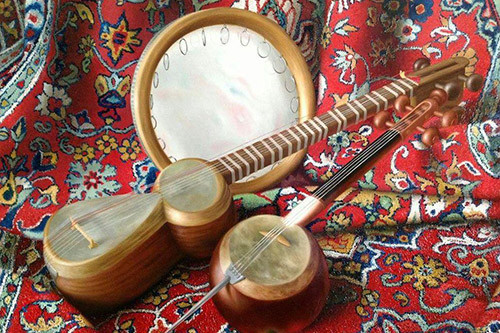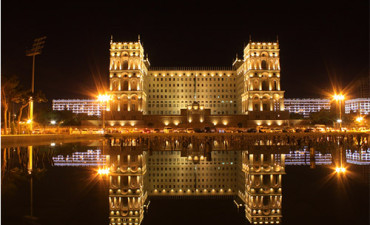Azerbaijani Music
Nestled between beautiful mountains and the Caspian Sea, Azerbaijan holds a special place in music tapestry. This musical culture of Azebaijan is full of ancient customs and reflects the feelings of its people, making a colorful picture of sound. Azerbaijani music is famous for its heartfelt tunes, interesting rhythms, and captivating singing. It's not just loved in Azerbaijan; people all around the world enjoy it. This music has a long history connected to important traditions, making it an valuable part of the diverse global music landscape.
The roots of national music go way back to the ancient Silk Road, where different musical styles mixed together, giving birth to the country's special musical identity. Throughout many years, Azerbaijani music has changed and taken in aspects from Persian, Turkish, and Arabic traditions, all while keeping its own unique character. This blend of influences has contributed to the rich and diverse tapestry, showcasing a history of cultural exchange that spans centuries.

Azerbaijani music is deeply rooted in mugham, a intricate and improvisational musical style that holds the prestigious title of a UNESCO Intangible Cultural Heritage of Humanity. Mugham is like a musical language with seven scales or modes, each creating its own unique emotions. When people perform mugham, they usually play traditional instruments like the tar, a stringed instrument, and the kamancha, a bowed instrument, adding a special touch to the music. This cultural gem showcases the rich musical tradition of Azerbaijan, celebrated not just locally but recognized globally for its significance.
It's no surprise to anyone that azerbaijani music has the wide range of musical instruments that really works in favour for both lyrics and all-in-all general aesthetic of the songs.
Azerbaijani folk music is a vibrant tapestry of melodies and rhythms that reflect the country's diverse cultural landscape. Folk songs, often accompanied by traditional instruments like the ghaval (drum) and the balaban (double reed instrument), narrate stories of love, loss, and everyday life, connecting listeners to their heritage.The tar, a stringed instrument with a distinctive pear-shaped body, is the heart of mugham ensembles. The kamancha, a bowed instrument with a captivating sound, adds depth and emotion to musical performances. Other notable traditional instruments include the qanun, a zither-like instrument, and the daf, a frame drum.

In the past few decades, national music has experienced a fascinating evolution by blending contemporary influences with its deep-seated traditional roots. Musicians from Azerbaijan have skillfully incorporated Western musical elements into their compositions, resulting in a harmonious fusion of both traditional and modern sounds. This dynamic blend has paved the way for a fresh wave of Azerbaijani musicians who are not only preserving their cultural heritage but also pushing the boundaries of the genre. This innovative approach has resonated globally, captivating audiences around the world and highlighting the adaptability and richness of Azerbaijani music in the contemporary music landscape.
Azerbaijani music has left an indelible mark on the global stage, enchanting audiences with its soulful melodies, intricate rhythms, and captivating vocals. The evolution of the country's rich musical heritage is a testament to its enduring appeal, drawing in new generations of musicians and enthusiasts. The cultural resonance of Azerbaijani music transcends borders, fostering a global appreciation for its unique blend of tradition and innovation, ensuring its continued impact on the diverse tapestry of world music.
Tags: Baku , Azerbaijani Mugham , Azerbaijani musicians , Music
Recent Posts

Buy any tour and get 15 percent discount in Baku restaurants

Festivals In Azerbaijan

Great Silk Road In Azerbaijan

Guide to outdoor activities




